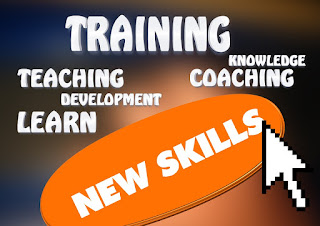The path to Success, Mastery and Flow
The best definition of success I have come across is:
“Success is the progressive realization of a worthy ideal or goal.”
In other words, success is deeply personal and can be defined uniquely by every individual based on their goals and aspirations. What success looks like for one person might be entirely different for another. I firmly believe that personal growth is intricately tied to an individual’s success, and this connection is what I aim to expand upon in this article.
We often hear the advice: “Do what you love.” While it’s inspiring, I prefer a slightly more pragmatic approach:
“Love what you do and keep getting better at it.”
Let me explain. You might love playing the guitar, but if you lack the skill or can’t devote the time to mastery, your passion alone won’t lead to success. Instead, embracing what you do for a living and striving for excellence can create a fulfilling and successful career. Not all of us have the luxury of doing what we love, but we always have the choice to bring passion and mastery to what we do. What does it take to achieve success and mastery? It boils down to a commitment to continuous improvement—getting better at what you do every day. This brings to mind the powerful Nike ad campaign from 1977, which declared:
“There is no finish line.”
One of the lines in the campaign reads, “Beating the competition is relatively easy, but beating yourself is a never-ending commitment.” That’s the essence of mastery: a mindset of relentless improvement.
Carol Dweck’s excellent book Mindset delves into the psychology of mastery, suggesting that it is rooted in a growth mindset. People with a growth mindset believe that intelligence and abilities can be developed through hard work, training, and learning. They embrace challenges and view failures as opportunities for growth, unlike those with a fixed mindset who see their abilities as static.
Dweck also distinguishes between two types of goals:
1. Performance goals: These focus on achieving specific outcomes (e.g., getting an A in French).
2. Learning goals: These focus on the process and long-term improvement (e.g., mastering the French language).
While performance goals offer immediate rewards, it is the pursuit of learning goals that leads to sustained mastery.
Jim Collins, in his seminal book Good to Great, introduces the Hedgehog Concept—a simple yet powerful framework for achieving greatness. He encourages us to reflect on three key questions:
1. What can you be the best in the world at?
2. What drives your economic engine?
3. What are you deeply passionate about?
By finding the intersection of these three areas, you can uncover your unique path to mastery. We live in an unprecedented era of abundance—not just economically, but in terms of information. Consider this mind-blowing statistic:
Over 90% of all the data in the world was created in the past two years.
The sheer volume of knowledge available today is staggering. While this abundance offers immense opportunities for learning, it also demands discipline and focus.
To navigate this abundance and achieve mastery, here are actionable steps you can take:
1. Identify experts in your field.
2. Read their books, blogs, and articles.
3. Listen to their podcasts and interviews.
4. Document what you’ve learned in a journal or digital notes.
5. Share your knowledge—teaching others solidifies your learning.
6. Set clear learning goals and review them regularly.
7. Read broadly to gain interdisciplinary insights.
8. Pursue relevant certifications to enhance your expertise.
9. Commit to learning something new every day.
10. Apply your knowledge to real-world challenges.
11. Strive for a state of flow, where you feel energized and fully immersed in your work.
12. Use commute time to listen to audiobooks or podcasts.
13. Cultivate grit—the perseverance and passion for long-term goals.
14. Embrace deliberate practice: focused, consistent effort aimed at improving specific skills.
Experts like Angela Duckworth emphasize that grit is a critical factor in success, while deliberate practice, as popularized by Anders Ericsson, requires 10,000 hours or 10 years of focused effort to reach mastery. Mastery is not a destination; it is a journey. The real joy lies in the pursuit of excellence and the commitment to lifelong learning. There are no shortcuts or quick fixes—only consistent effort over time.
One inspiring example is Tenzing Norgay, who summited Mount Everest alongside Edmund Hillary on his seventh attempt. His story is a testament to perseverance and the rewards of unwavering commitment.
In his book Flow, Mihaly Csikszentmihalyi describes the state of flow as a peak experience where everything falls into place. Here are the key elements:
1. Clear and challenging goals.
2. Intense concentration.
3. A sense of timelessness, where hours feel like minutes.
4. Immediate feedback.
5. Tasks that are slightly beyond your current abilities.
6. An escape from the everyday.
Achieving flow regularly in your work or personal pursuits can be transformative, leading to both mastery and success.
I’ll leave you with this quote from Elbert Hubbard:
“Self-discipline is the ability to make yourself do what you should do when you should do it, whether you feel like it or not.”
Self-discipline, coupled with a growth mindset, deliberate practice, and the pursuit of lifelong learning, is the ultimate recipe for success and mastery. The views expressed here are my own and do not represent my organization.









Comments
Post a Comment